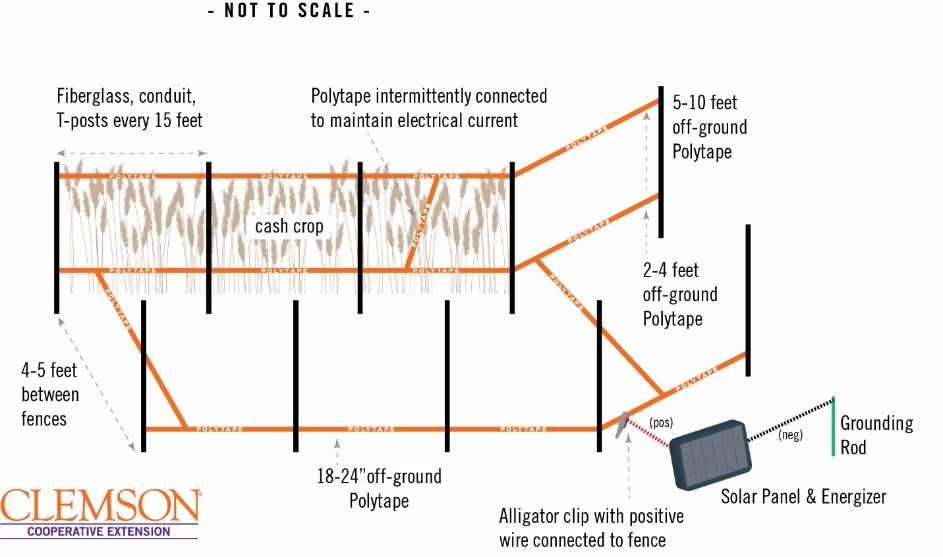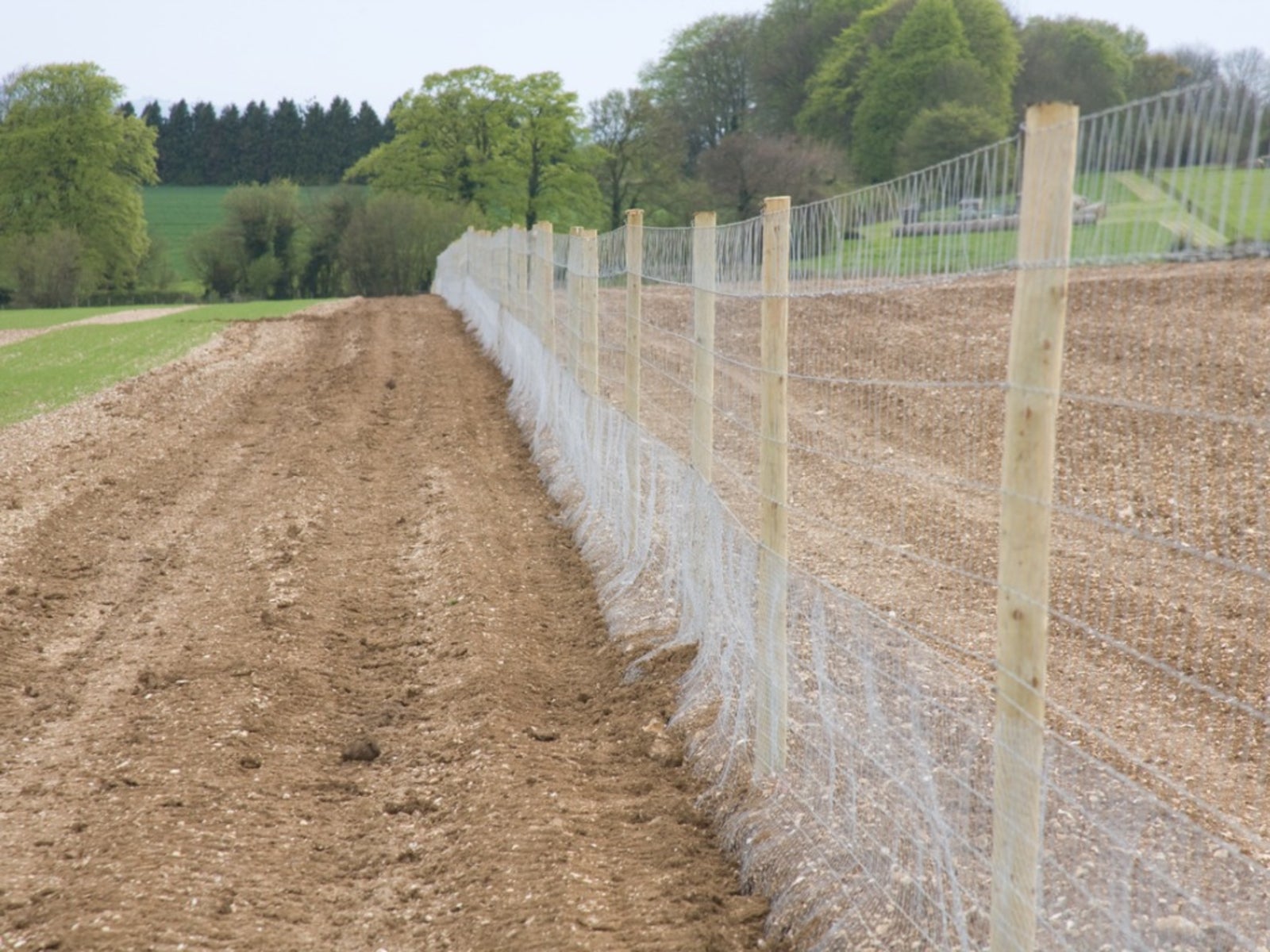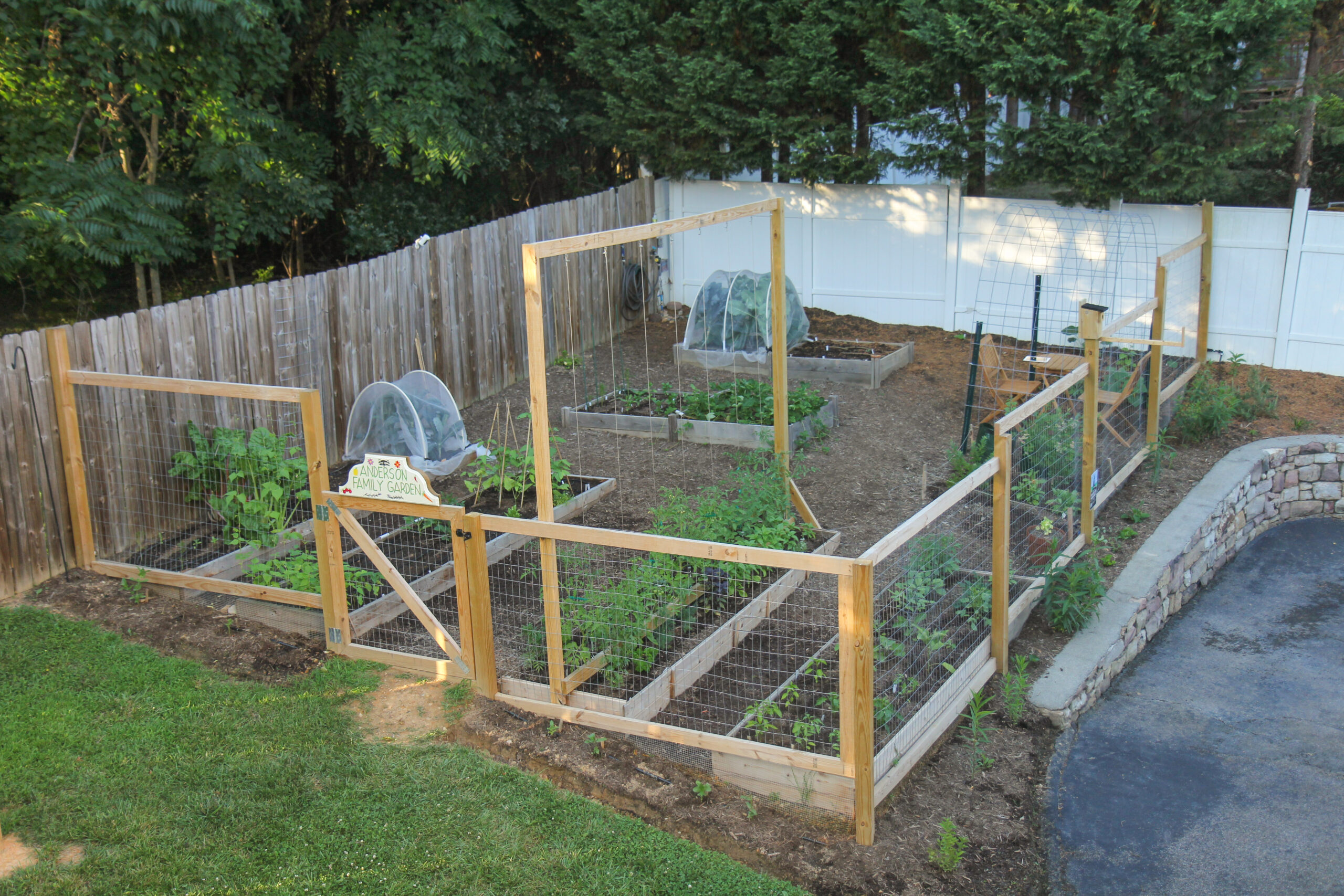Have you ever wondered how to keep deer out of your yard and garden? If you live in an area where deer are a frequent visitor, installing a fence can be an effective solution. In this article, we will discuss how to install a fence for deer prevention, giving you the information you need to protect your plants and property from these graceful but pesky creatures. Whether you’re a seasoned DIYer or just starting out, we’ve got you covered with step-by-step instructions and helpful tips. So, let’s dive in and learn more about this important topic!
When it comes to installing a fence for deer prevention, there are several factors to consider. First and foremost, the height of the fence is crucial. Deer are excellent jumpers, so a fence that is at least 8 feet in height is recommended. Additionally, the material of the fence is important as well. Metal or wooden picket fences are popular choices, as they are sturdy and can effectively deter deer. However, chain link fences may not be as effective, as deer can easily squeeze through the gaps. In our detailed article, we will go over different types of fences, their pros and cons, and provide you with the information you need to make an informed decision. So, whether you’re looking to protect your vegetable garden or simply want to create a deer-free zone in your backyard, we’ve got the information you need to get started. Stay tuned for our upcoming article on how to install a fence for deer prevention!
How to Install a Fence for Deer Prevention
Installing a fence for deer prevention can be a crucial step in safeguarding your property, whether it’s a garden, landscaping, or simply your personal space. Deer can cause extensive damage to vegetation and carry ticks that transmit diseases. By installing a deer fence, you can protect your property and maintain a healthy environment. In this article, we will guide you through the process of installing a deer fence, discuss different materials to consider, and explore various methods to ensure effective deer prevention. Additionally, we will address common issues, provide maintenance tips, and cover safety considerations and legal requirements. Let’s get started!

Types of Fences
Wooden Fences
Wooden fences are a popular choice for both residential and commercial properties due to their natural appearance and versatility. They can provide privacy and security while enhancing the aesthetics of your property. However, it’s important to select the right type of wood and properly maintain the fence to ensure its longevity.
Chain Link Fences
Chain link fences are known for their durability and affordability. They are often used for larger areas where visibility is important. While they may not offer the same level of privacy as other fence types, they can effectively keep deer out of your property.
Vinyl Fences
Vinyl fences are low-maintenance and resistant to rot, decay, and pests. They are available in various styles and colors, allowing you to choose one that complements your property’s design. Vinyl fences are a long-lasting option that provides both security and aesthetic appeal.
Wrought Iron Fences
Wrought iron fences offer a classic and elegant look while providing excellent security. They are durable and can withstand harsh weather conditions. However, their maintenance requirements may be higher compared to other fence types.
Factors to Consider Before Installing a Fence
Before diving into the installation process, consider the following factors to ensure that you make an informed decision about the type of fence that best suits your needs:
Property Boundary and Zoning Regulations
Determine your property boundaries and check local zoning regulations to understand any restrictions or permits required for installing a fence. It’s vital to comply with these regulations to avoid potential legal issues in the future.
Security and Privacy Needs
Assess your security and privacy needs. Determine the level of protection you expect from the fence. If privacy is a priority, you may opt for a taller fence with minimal gaps. Additionally, consider any potential access points that need gates or other entry options.
Budget and Cost
Establish a budget for the fence installation project, including both materials and labor costs. It’s important to balance quality and cost-effectiveness. Different fence materials come with varying price tags, so choose one that fits your budget without compromising on long-term durability.
Maintenance Requirements
Evaluate the maintenance requirements of different fence materials. Some may require periodic cleaning, painting, or staining. Determine whether you are willing and able to invest time and effort into maintaining the fence to keep it in optimal condition.

Step-by-Step Guide to Installing a Deer Fence
Installing a deer fence may seem daunting at first, but with careful planning and the right tools, you can ensure a successful installation. Follow these step-by-step instructions to install your deer fence effectively:
Determine Fence Location and Height
Begin by outlining the area where you intend to install the fence. Take into account the shape of your property, existing structures, and any specific areas you want to protect. Determine the appropriate fence height, typically recommended to be at least 8 feet for effective deer prevention.
Gather Necessary Tools and Materials
Make a list of the tools and materials you will need for the installation process. This may include fence posts, rails, panels, gate hardware, post hole diggers, gravel, concrete, screws, and wire. Having everything prepared in advance will streamline the installation process.
Prepare the Ground
Clear the area of any debris, rocks, or vegetation that may hinder the fence installation. Level the ground to ensure the fence remains sturdy and secure. Consider removing any shrubs or plants that could provide deer with a foothold to jump over the fence.
Install Fence Posts
Begin by installing the fence posts at regular intervals along the planned fence line. Ensure the posts are securely planted in the ground to withstand wind and other external factors. It’s advisable to set the posts in concrete to enhance stability.
Attach Fence Rails and Panels
Attach the fence rails to the posts using appropriate hardware. Then, attach the fence panels to the rails, ensuring they are properly aligned and level. Follow the manufacturer’s guidelines for attaching panels to ensure a secure and uniform installation.
Secure the Fence with Bracing
Install additional braces or supports to reinforce the fence’s stability, especially for longer fence sections. Bracing will help the fence withstand external forces and prevent sagging or leaning over time. It’s essential to properly secure the fence at intervals to maintain its effectiveness.
Add Gates and Access Points
Install gates or access points in areas where you need entry and exit options. Ensure the gates are sturdy, well-aligned, and properly secured. Consider using gate locks or latches for added security.
Choosing the Right Material for Deer Prevention
Selecting the right material for your deer fence is crucial to ensure its longevity and effectiveness. Take the following factors into consideration when choosing a fence material:
Consider Durability and Longevity
Choose a material that is durable and can withstand various weather conditions. The fence should be able to resist damage from wind, rain, sun, and potential impact from deer or other animals.
Evaluate Resistance to Rust and Decay
If you opt for metal fences like wrought iron or chain link, ensure they are resistant to rust. For wooden fences, selecting treated wood or naturally rot-resistant species can help prevent decay and extend the fence’s lifespan.
Assess Visibility and Aesthetics
Consider the visibility and aesthetics of the fence. A fence that is highly visible can act as a deterrent for deer, reducing the risk of them attempting to jump over it. Additionally, choose a fence that complements the overall design of your property.
Review Maintenance Requirements
Different fence materials vary in their maintenance requirements. Consider the amount of time and effort you are willing to invest in maintaining the fence. Some materials may require regular cleaning, painting, or treatment to prevent decay or degradation.

Methods for Ensuring Effective Deer Prevention
Although installing a deer fence is an effective measure, combining it with other prevention methods can enhance its effectiveness. Consider the following methods to further deter deer from entering your property:
Using Electric Fencing
Electric fencing can provide an additional deterrent for deer. When properly installed, it delivers a mild electric shock upon contact, discouraging deer from attempting to cross the fence.
Installing Deer-Repellent Plants
Introduce deer-repellent plants around your property to discourage deer from entering. Certain plants, such as lavender, rosemary, and marigolds, have scents that repel deer. Research and select deer-resistant plant varieties suitable for your region.
Implementing Motion-Activated Devices
Motion-activated devices, such as sprinklers or noise emitters, can startle and deter deer from approaching your property. These devices use sound, water, or other deterrent mechanisms to prevent deer from entering protected areas.
Utilizing Scent-Based Deterrents
Deer have a keen sense of smell, so using scent-based deterrents can be effective. Consider using commercial repellent sprays or natural options like predator urine or soap. These scents can create a barrier and discourage deer from venturing close to your property.
Tips for Proper Fence Maintenance
Maintaining your deer fence is crucial to ensure its long-term effectiveness. Consider the following tips for proper fence maintenance:
Regular Inspections and Repairs
Regularly inspect the fence for any damage, such as broken panels, loose screws, or bent posts. Repair any issues promptly to maintain the fence’s stability and prevent potential deer breaches.
Cleaning and Removing Debris
Periodically clean the fence by removing any debris, dirt, or vegetation that may accumulate. This will help prevent mold growth and maintain the fence’s appearance.
Trimming Vegetation Around the Fence
Keep the area around the fence clear of overgrown vegetation. Trim branches or bushes that may provide deer with an opportunity to jump over the fence or damage it.
Applying Protective Coatings
If you have a wooden fence, consider applying protective coatings, such as sealants or stains, to enhance its resistance to decay, moisture, and other environmental factors. Follow the manufacturer’s instructions and reapply as necessary.

Common Issues and Troubleshooting
Even with proper installation and maintenance, you may encounter certain issues with your deer fence. Here are some common problems and troubleshooting tips:
Inadequate Deer Deterrence
If deer are still entering your protected area, evaluate the height and strength of the fence. Consider increasing the fence height or installing additional deterrents, such as electric fencing or motion-activated devices.
Structural Damage to the Fence
Harsh weather or external impact can potentially damage the fence. Inspect the fence regularly and repair any structural issues promptly. Reinforce weak areas or replace damaged panels to maintain the fence’s effectiveness.
Malfunctioning Motion Sensors
If your motion-activated devices are not functioning properly, check the batteries or power source. Ensure they are properly connected, and clean any dirt or debris that may be obstructing the sensors.
Issues with Electric Fencing
If your electric fence is not delivering a shock, check the connections and grounding to ensure they are secure. Test the voltage with a voltmeter to ensure it’s at the desired level. Consult an electrician if you encounter any technical concerns.
Frequently Asked Questions
To address common queries and provide additional information, here are answers to some frequently asked questions about installing a deer fence:
What is the best height for a deer fence?
The recommended height for a deer fence is at least 8 feet. This height provides an effective deterrent for most deer species, preventing them from jumping over the fence.
How far should deer fence posts be spaced?
Deer fence posts should be spaced approximately 8 to 10 feet apart. This spacing ensures proper stability and support for the fence panels.
Can I install a deer fence on uneven terrain?
Yes, it is possible to install a deer fence on uneven terrain. However, it may require additional planning and adjustments to ensure a level and secure installation.
Do deer fences affect other wildlife?
Deer fences are primarily designed to prevent deer from entering protected areas. However, it’s important to consider the potential impact on other wildlife species. Ensure there are alternative routes for animals and consider their needs when planning the fence installation.

Advantages of Installing a Deer Fence
Installing a deer fence offers numerous advantages for both residential and commercial properties. Here are some key benefits:
Protection for Gardens and Landscaping
A deer fence helps protect your gardens, landscaping, and crops from deer damage. By preventing deer access, you can preserve the beauty and health of your plants.
Prevention of Deer-Related Property Damage
Deer can damage property by rubbing against trees, causing harm to bark, and potentially leading to tree decline. A deer fence acts as a physical barrier, preventing this type of property damage.
Reduced Risk of Tick-Borne Diseases
Deer can carry ticks, which transmit diseases such as Lyme disease. By keeping deer out of your property, you can reduce the risk of tick exposure for yourself, your family, and your pets.
Preservation of Native Plant Species
Uncontrolled deer populations can negatively impact native plant species by overgrazing and altering natural ecosystems. Installing a deer fence helps preserve and maintain the balance of native flora and fauna.
Disadvantages of Installing a Deer Fence
While deer fences offer significant benefits, there are a few potential disadvantages to consider:
Visual Obstruction
Some deer fences, particularly taller ones, may obstruct views or disrupt the aesthetic appeal of the property. Consider the potential impact on your property’s visual aspects before installing a fence.
Potential Negative Impact on Wildlife Migration
If not properly planned, a deer fence can hinder the natural migration of some wildlife species. Consider incorporating wildlife-friendly elements, such as wildlife corridors or underpasses, to mitigate this potential issue.
Cost of Installation and Maintenance
The cost of installing a deer fence can vary depending on the material, size of the area, and complexity of the terrain. Additionally, ongoing maintenance requirements may add to the overall cost.
Required Permits and Regulatory Compliance
Installing a deer fence may require permits or compliance with specific regulations set by local authorities or homeowner associations. Ensure you understand and meet all necessary requirements before proceeding with the installation.
Safety Considerations and Legal Requirements
When installing a deer fence, it’s essential to prioritize safety and adhere to legal requirements. Here are a few important considerations:
Safety Precautions during Installation
Take necessary safety precautions during the installation process. Use proper protective gear such as gloves, safety glasses, and helmets when handling tools and materials. Ensure you are familiar with the safe operation of any equipment used.
Potential Hazards to Wildlife and Pets
Be mindful of potential hazards to wildlife and your pets when installing a deer fence. Consider the impact on animal movement and ensure there are alternative paths for wildlife to access essential resources.
Compliance with Local Building Codes
Consult local building codes and regulations to ensure compliance with any height limits, setback requirements, or other specifications. Failure to comply may result in fines or the need for costly modifications.
Contacting Utility Companies for Underground Lines
Before digging fence post holes, contact utility companies to identify the location of any underground lines or cables. This will help prevent accidents and ensure no damage is done to existing infrastructure.
Environmental and Ethical Aspects of Deer Fences
Installing a deer fence raises important environmental and ethical considerations. Here are a few aspects to keep in mind:
Balancing Wildlife Protection and Property Rights
Installing a deer fence requires a balance between protecting your property and considering the needs of wildlife. Design the fence in a way that minimizes its impact on wildlife movement and provides alternative pathways for their passage.
Impact on Deer Population Dynamics
Deer fences can influence the behavior and movement patterns of deer populations. Assess the local deer population dynamics and consult with experts to determine the most appropriate approach for preventing deer while maintaining long-term ecological balance.
Considerations for Other Animal Species
Remember that deer fences can potentially impact other wildlife species as well. Consider the needs of other animals, ensuring they are not excessively disrupted or put at risk due to the presence of the fence.
Sustainable Fence Material Choices
Choose fence materials that align with sustainable practices. Opt for materials that are recyclable, made from renewable resources, or have a low environmental impact. This helps minimize your carbon footprint and promotes environmental stewardship.
Case Studies and Success Stories
To gain further insight and inspiration, explore these case studies and success stories related to deer fence installations:
Deer Fence Installation in Rural Areas
Learn from successful deer fence installations in rural areas. Understand the challenges faced and the strategies employed to effectively prevent deer from damaging crops, gardens, and natural resources.
Community Efforts for Deer Management
Explore community-led initiatives that aim to manage deer populations while preserving natural habitats. Understanding such efforts can help inspire effective deer management solutions in your own community.
Successful Deer Prevention Strategies
Delve into stories of individuals or organizations that have successfully implemented deer prevention strategies. Learn from their experiences and adapt their techniques to your own situation.
Dealing with Unforeseen Challenges
Discover how others have overcome unexpected challenges during the installation or maintenance of deer fences. Gain insights into troubleshooting techniques and problem-solving approaches.
Conclusion
Installing a fence for deer prevention is a practical and effective solution to protect your property, gardens, and landscaping. By following the step-by-step guide provided in this article and considering the various factors involved, you can install a deer fence that meets your specific needs. Additionally, implement additional prevention methods, engage in proper maintenance, and adhere to safety considerations to ensure long-term success. Remember the environmental and ethical aspects related to deer fences and seek to strike a balance between your property rights and wildlife preservation. With proper planning and execution, your deer fence will offer the desired protection and contribute to maintaining a healthy ecosystem.